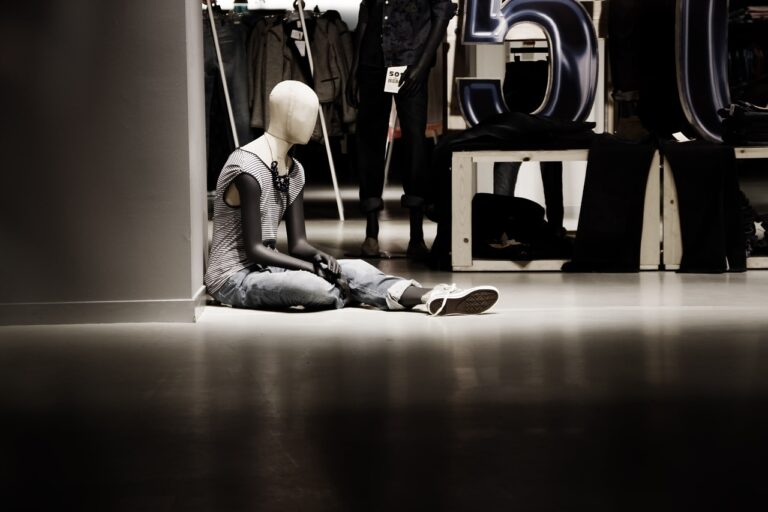Fashion and Robotics: The Role of Automation in Clothing Production
In recent years, the fashion industry has witnessed a remarkable transformation with the integration of robotics and automation in clothing production. This trend has revolutionized the way garments are designed, manufactured, and distributed, leading to increased efficiency and reduced costs. In this article, we will delve into the fascinating intersection of fashion and robotics, exploring the role of automation in shaping the future of the clothing industry.
The Evolution of Automation in Fashion
Automation has long been used in various industries to streamline processes and improve productivity. In the realm of fashion, the use of robotics in clothing production dates back to the early 20th century, when mechanized sewing machines revolutionized the way garments were made. However, it is only in recent years that we have witnessed a significant spike in the adoption of advanced automation technologies in the fashion industry.
One of the key drivers behind this trend is the increasing demand for fast fashion, which requires quick turnaround times and low production costs. To meet these requirements, many fashion brands have turned to automation to speed up the production process and reduce labor costs. Automated cutting machines, for example, can cut fabric with precision and efficiency, eliminating the need for manual labor and reducing waste.
The Benefits of Automation in Clothing Production
The integration of robotics and automation in clothing production offers a wide range of benefits for both manufacturers and consumers. One of the most significant advantages is increased efficiency. By automating repetitive tasks such as cutting, sewing, and quality control, manufacturers can produce garments at a much faster pace, leading to shorter lead times and higher output.
In addition to efficiency, automation also helps to improve the quality and consistency of garments. Robots can perform tasks with precision and accuracy, ensuring that each piece is made to the highest standards. This not only enhances the overall quality of the product but also helps to reduce defects and returns, saving manufacturers time and money.
The Future of Fashion: Robotics and AI
As technology continues to advance, the future of fashion is likely to be driven by robotics and artificial intelligence (AI). These technologies have the potential to revolutionize every aspect of the clothing industry, from design and production to distribution and retail.
One of the most exciting developments in this space is the use of AI-powered algorithms to predict fashion trends and consumer preferences. By analyzing vast amounts of data, these algorithms can help designers create more targeted and personalized collections, leading to greater customer satisfaction and increased sales.
Robots are also likely to play a more prominent role in the production process, with advanced machines capable of handling a wide range of tasks, from cutting and sewing to packaging and shipping. This increased automation will not only help to reduce costs and improve efficiency but also enable manufacturers to respond more quickly to changing market demands.
Challenges and Considerations
While the integration of robotics and automation in clothing production offers many benefits, it also presents a number of challenges and considerations for the industry. One of the key concerns is the impact on jobs, as automation has the potential to replace a significant number of manual labor roles. This raises questions about the future of work in the fashion industry and the need for retraining and reskilling programs for displaced workers.
Another consideration is the environmental impact of automation. While robotics can help to reduce waste and improve efficiency, the production of these machines and the energy they consume can have a negative impact on the environment. It is essential for the fashion industry to find sustainable solutions that balance the benefits of automation with the need to minimize ecological harm.
FAQs
Q: How is automation changing the fashion industry?
A: Automation is revolutionizing the fashion industry by streamlining production processes, improving efficiency, and reducing costs.
Q: What role does robotics play in clothing production?
A: Robotics are used in various aspects of clothing production, from cutting fabric to sewing garments and packaging finished products.
Q: What are the benefits of automation in fashion?
A: Automation in fashion production offers benefits such as increased efficiency, improved quality, and faster turnaround times.
Q: What are the challenges of integrating robotics in the fashion industry?
A: Some of the challenges include job displacement, environmental impact, and the need for retraining programs for workers.
Q: What does the future hold for fashion and robotics?
A: The future of fashion is likely to be shaped by robotics and AI, with advanced technologies driving innovation and efficiency in the industry.
Overall, the integration of robotics and automation in clothing production represents a significant step forward for the fashion industry, offering numerous benefits for manufacturers, consumers, and the environment. By leveraging these technologies responsibly and thoughtfully, the fashion industry can continue to evolve and thrive in the digital age.







